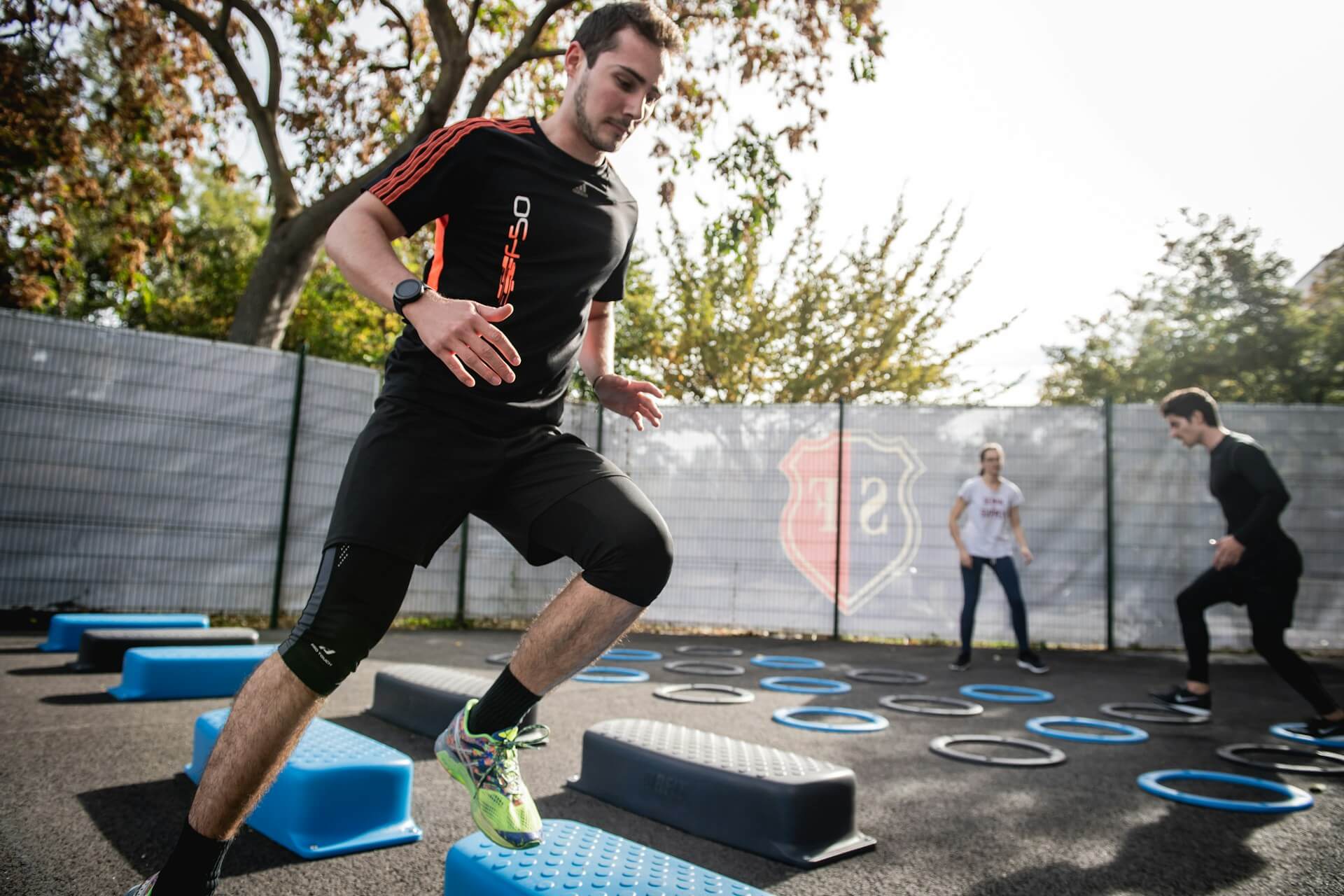Marathon Training Tips for Your First Race
May 11, 2022

As an Amazon Associate, Modded gets commissions for purchases made through links in this post.
Marathon training is in full swing for 2022. The annual Boston Marathon kicked off the United States’ marathon season on April 18, and now running enthusiasts are ramping up their training for peak marathon season in the late summer/early fall. If you’re a runner looking to try your first marathon, follow these training essentials to maximize your performance.
What is a Marathon?
A marathon is a race of 26.2 miles. The name comes from the historic Battle of Marathon that stopped Persia’s first invasion of Greece in 490 B.C. Citizens of Athens and Plataea fought back King Darius I’s force and secured independence for the Greeks.
Before the battle, a messenger named Pheidippides sprinted about 150 miles from Athens to Sparta in just two days to request reinforcements. The Greeks didn’t need help after all, but their remaining force rushed from Marathon to Athens about 25 miles away to cut off the Persian navy from the city and secure the victory. It’s one of the fastest and most decisive military maneuvers in recorded history.
Legend has conflated these two stories, saying that Pheidippides ran 25 miles from Marathon to Athens to bring news of the victory shortly before dying of exhaustion. Even though that story isn’t entirely true, Pheidippides’ sprint and the Athenian army’s recovery are both worthy of remembrance.
The first official “marathon” took place in the 1896 Athens Olympics with a 25-mile course. The first 26.2-mile marathon happened in London’s 1908 Olympics because Queen Alexandria requested that the race start on the Windsor Castle lawn, which added another mile or so to the race. 26.2 became the official distance from that point forward.
Historical context is important for any sport, especially age-old activities like distance running. Armed with sufficient background knowledge, you can respect the sport and train the right way.
Key Components of Marathon Training
Marathon training is one of the most rigid and detailed processes in all of sports. It takes a minimum of 12 weeks of clean eating and a near-obsessive attention to detail to prepare for a race. One footstep or one second can make all the difference. You need to focus your training efforts on four essential components:
- Mileage: improve your average mile time with three to five sessions a week.
- Distance: test your maximum distance once a week to get closer to the 26.2 mark.
- Speed: incorporate intense interval training and tempo runs to improve your cardiovascular strength and endurance.
- Recovery: give yourself the proper time and fuel so your body and mind can recover for the next training session.
Before you jump in to training, start off with the basics. Measure your current mile time and determine how much progress you need to make. Use this average mile time chart and set the appropriate benchmark for your age and sex. Exercise is much more enjoyable when you have a clear goal. Once you have your number, you can begin your marathon training.
Mileage
Improving your mile time is the most straightforward part of your training. As you might expect, you can only lessen your mileage by running more miles. By the end of your 12-week timeframe, you should be running at least 50 miles per week (a little less than two marathons). This way, your body will be accustomed to the marathon’s workload.
You should run three to five times a week at a steady pace. You don’t want to run too fast or too slow. Distance running is all about maintaining a manageable pace from start to finish. Your mileage should only increase by 10% each week to avoid burnout and keep your legs fresh in the long run.
Distance
We’ll start this section by saying you should NEVER run a full 26.2 mile session during your training. The peak long run for marathon training is usually no more than 20 miles. Test your longest run every seven to ten days. Start at a slow pace to build confidence and allow your body to adjust to the longer distance.
Your distance will probably improve every week, but be cautious about riding the momentum. You should scale the distance back every few weeks and give yourself more energy to focus on the other training elements.
Speed
Speed is the main factor that will make your runs feel “easier.” With a stronger maximum cardio output, you can push yourself harder and farther. Your default pace will improve as well. You should include interval and tempo runs every week:
- Interval: run a short burst up to one mile at high speeds, followed by a light jog. The sudden shift in intensity improves your cardiovascular control and will help you on those crucial stretches of the race.
- Tempo: run between three and ten miles at a speed slightly faster than your default pace. These sessions force your mind and body to adapt to the faster pace.
Every marathon has a few portions of flat, open road that give runners an opportunity to pick up speed and catch up to the leaders. You need to have the capacity to take advantage of those parts of the race.
Recovery
Take at least one day off per week to let your mind and body recover. Still, you shouldn’t just sit around and wait for the next training session. Do some static stretching or other low-stress activities to stay loose. Breathing exercises are particularly useful for runners. Maintain a consistent sleep schedule and avoid late nights so your progress doesn’t get interrupted.
Diet is another crucial part of recovery. You need to eat relatively clean to optimize your body’s performance. Cut out processed foods and focus on these three food groups:
- Whole grains: whole wheat bread, pasta, rice, potatoes
- Lean protein: chicken, eggs, beans, greek yogurt
- Antioxidants: berries, mixed greens, nuts, seeds
Drink plenty of water and eliminate soda and alcohol. They’re not doing you any favors. Sugary sports drinks are okay in moderation, but they shouldn’t be your main sources of hydration. Water will always be king.
Marathon Logistics
Sign up for a local marathon you think you can handle. Since it’s your first attempt, choose a course with minimal elevation changes and plenty of places to stop. As you will see, stopping is a nuanced part of marathoning that beginners often learn the hard way.
Hydration
All marathons have water stations every few miles, so you won’t need to worry about running out of water. Even so, you should try to emulate your training as much as possible. If you trained with a water bottle or hydration pack, bring one for the race. You don’t want to create a new environment and psych yourself out.
Eating
You can’t stop for a meal during the race, but you can’t entirely avoid eating either. Our bodies can only store so much glycogen (our primary energy source in distance running) that often runs out at around the 20-mile mark. Bring along energy bars, chews and gels that you can consume on the go. These snacks will give you a sufficient carbohydrate and sugar boost to finish the race.
Bathroom Breaks
If you have the right diet, you won’t need to worry about too many bathroom breaks. But if you feel the urge during the race, the course will have numerous porta-potties to choose from. Some runners don’t mind waiting in line, while others are willing to “hold it” for later in the race. We trust that you’ll use good judgment when deciding where/when to use the bathroom.
Other Tips for Your First Race
Many runners have to learn these tips and tricks on their own, but you’re one of the lucky few who get all the insider knowledge beforehand. Remember these tips when preparing for/running your first race:
- Wear the same running shoes you trained with.
- Hydrate well and eat many fibrous carbs several days before the race.
- Use Vaseline to lubricate areas that are sensitive to chafing (armpits, inner thighs, etc.).
- Find the starting line and locate a porta-potty at least 30 minutes before the race begins.
- Don’t overdress. The temperature will rise as the race progresses.
- Check the marathon’s rules to see if earbuds or headphones are allowed.
- Start slow and don’t take the first bathroom break you see. Wait a few miles for the lines to thin out.
- Feed off the crowd’s energy. You need all the external motivation you can get.
- Bring your friends and establish a meet-up point late in the race. They can give you a huge boost for the final stretch.
Crush Your First Marathon
Distance running is one of the most challenging activities in all of sports. It tests your mental and physical endurance like nothing else on earth. If you think you’re up to the challenge, follow this training guide and crush your first marathon just like the Greeks crushed the Persians on that historic day over 2,500 years ago.






